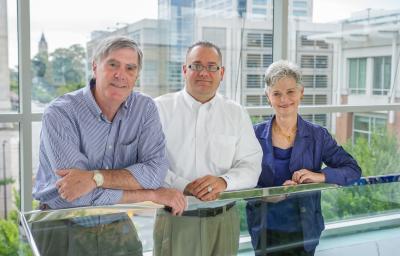Due to increased regulations, a culture war against pharmaceutical corporations, and the high costs of trials, companies have increasingly allowed early taxpayer-funded biomedical research to spread the risk among hundreds of millions of people. The pace of invention has slowed considerably and it may be because of academic culture, according to a new study.
An analysis of patented university inventions has revealed early bottlenecks on the path to commercialization and the authors suggest that better communication of basic research results during the discovery stage could lead to faster commercialization down the road.
For three decades, American policy has allowed universities to commercialize taxpayer-funded research for their own gain. That means discoveries made in university laboratories can be licensed to biotechnology firms. Clinical trials, which have a high failure rate, are the most famous bottleneck in drug development - every week a new press release claims to have cured a disease in mice, but it's rarely exciting enough to go to further testing, much less clinical trials.
The new study pinpoints how much time is lost earlier in the pathway, when biotechnology companies give up on an invention and transfer the technology to other biotechnology firms for repurposing in a new disease category.
Since companies have paid for a product, they don't share their basic research on an invention with the outside world, and that may be an under-appreciated cost of commercialization, since basic science research is then repeated, postponed, or never performed.
"The timeline for commercialization is much longer than most people think. There is so much turmoil and churn within the process," said co-author Jerry Thursby, a professor and the Ernest Scheller, Jr. Chair in Innovation, Entrepreneurship, and Commercialization at the Scheller College of Business at the Georgia Institute of Technology, about the paper in Science Translational Medicine.
Say a university does basic research and then licenses a discovery to a small biotechnology firm that advances the research. If it looks promising, the modern cultural landscape and its high costs forces the small biotech firm to sub-license the discovery to a larger company that can afford to run clinical trials. Basic research often zigzags across biotech firms and research areas before a drug is finally developed. Because the window when a discovery can be sold before it goes generic is small, and trial costs are so high, everyone wants to protect new patents.
"What these data reveal is that there's a lot of bench to bench translational research. It's not linear," said Marie Thursby, co-author and the Hal and John Smith Chair in Entrepreneurship at the Scheller College of Business. Matthew Higgins, an associate professor of strategic management, was also co-author.
For the study, the researchers built a database of 835 patents in 342 university licenses with biotechnology firms. The researchers then traced the path of patents to document whether they were subsequently sub-licensed to another firm for testing in a new disease category or whether the sub-license was to a large firm for clinical trials or marketing. Sub-licensing often resets the development timeline in what the authors refer to as bench-to-bench translational research.

This image shows, from left to right: Jerry Thursby, Matthew Higgins and Marie Thrusby.Credit: Georgia Institute of Technology
"A very large fraction of the time, an invention pops out as something else and the timeline for the discovery stage starts all over again," said Jerry Thursby.
Of the 835 inventions studied, 27 percent appeared in a second license. The average time between invention and first license was five and a half years, and the average time between first- and second-license was three and a half years.
This time span for the upstream phase of the translation process is substantial, the study says, given that the average time from discovery to approval of new drugs (including biologics) by the U.S. Food and Drug Administration (FDA) is 13 years.
Of the first-licenses that list a stage of development, 92 percent were either at the discovery or lead molecule stages (the earliest two stages, respectively), with only 6 percent listed in clinical trials. Among the second-licenses, only 22 percent were in clinical trials or beyond.
"Nobody knew the magnitude of how much licensing changes and the stages at which they change," said Marie Thursby. "The biotechnology industry is quite fragmented, and there are all sorts of informational problems."
This analysis of early-stage biomedical translation suggests that stakeholders need to design policies and initiatives that enhance early translation by more efficiently driving more inventions into multiple disease pipelines.
One option might be the formation of an open-source translational research database that complements clinicaltrials.gov, where patents and licenses for fundamental biomedical research believed to be destined for eventual therapeutic use initially would be logged and shared.
"What might be a failure to a biotech firm could be a success to society as a whole," Jerry Thursby said.





Comments